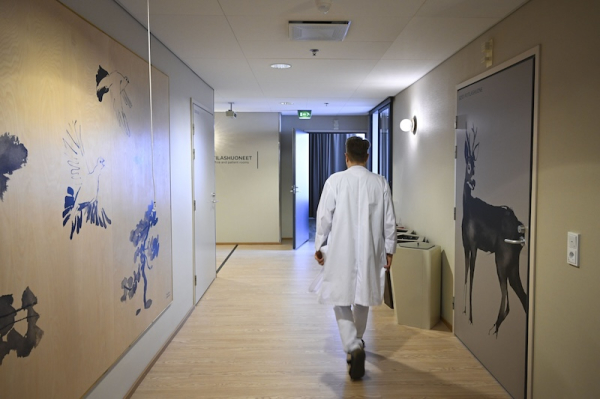Report: Finland’s economic growth built on just two sectors

In addition to digital services, the health and social care sector has played a major role in the growth of Finland’s living standards over the past ten years. Photo: Emmi Korhonen / Letikuva
- Next Article Mira Luoti says she was sexually assaulted during TV show filming
Finland’s economic growth over the past ten years has depended almost entirely on two industries: digital services and the health and social care sector, according to a new report by the Research Institute of the Finnish Economy (Etla).
The report, authored by Etla’s managing director Aki Kangasharju, concludes that growth has been sustained by a narrow base and that broader structural weaknesses have limited the improvement in Finnish living standards.
Published on Monday, the memorandum titled “The Guilty and the Innocent Behind Weak Economic Growth” examines the impact of 60 industries on Finland’s employment, productivity, and per capita output between 2015 and 2024.
The findings show that the strongest contributor to growth has been digital services, particularly in information technology. The second key driver has been employment growth in the health and social care sector, known in Finland as the “sote” sector.
According to Kangasharju’s analysis, employment gains in publicly funded care services significantly increased living standards in Finland during the review period. However, he stressed that the sector’s growth is primarily tax-funded and has low productivity.
“The improvement in living standards would have been greater if employment growth had focused on high-productivity sectors instead,” Kangasharju said.
Three publicly financed sectors, social care, education, and healthcare, ranked among the top ten in terms of their contribution to national living standards. Among private sector industries, only digital services, processing industries, and distribution services provided meaningful gains, though their impact was estimated to be only half that of the public service sectors.
Some traditional industries performed poorly. Construction, retail, transport, and manufacturing had a negative effect on Finland’s overall living standards and economic growth, the report said.
Between 2015 and 2024, Finland’s per capita GDP grew at an annual average rate of just 0.6 percent. The report notes that Finland’s standard of living rose more than three percentage points less than the average across other Nordic countries and euro area member states over the same period.
Kangasharju argued that in order to improve productivity, Finland must develop labour-saving technologies in the care sector and increase international recruitment for nursing and social care roles.
He also pointed to a need for renewed industrial growth, particularly in forest and chemical industries, as well as in metal processing and fabricated metal products.
The report reflects growing concern among economists and policymakers that Finland’s long-term economic performance remains fragile despite positive employment trends.
HT
- Next Article Mira Luoti says she was sexually assaulted during TV show filming
Source: www.helsinkitimes.fi
